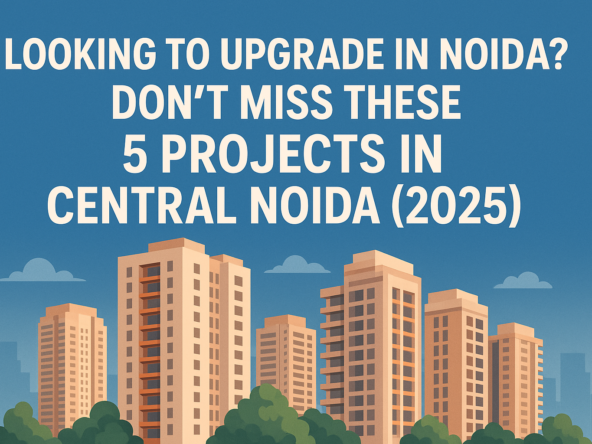Building a Sustainable Future: The Rise of Green Homes in India
Introduction
India, a nation grappling with rapid urbanisation, pollution, and climate vulnerabilities, is witnessing a quiet revolution in its housing sector. With buildings contributing to 40% of global CO₂ emissions (UNEP), India’s push toward green homes is not just aspirational but essential. By 2030, the country is projected to add 300 million urban residents, demanding smarter, sustainable living solutions. Green homes rooted in energy efficiency, water conservation, and cultural relevance are emerging as a beacon of hope. This blog explores India’s green housing landscape, its challenges, innovations, and the roadmap for a resilient future.
What Defines a Green Home in India?
Green homes in India blend modern sustainability practices with traditional wisdom. Key features include:
Energy Efficiency
Climate-Responsive Design: Passive solar architecture—using orientation, shaded windows, and courtyards—adapts to India’s diverse climates. In Rajasthan, thick walls and jaali screens combat heat, while Kerala’s sloping roofs manage heavy rains.
Solar Power Integration: Solar panels on roofs are becoming more popular thanks to programmes like the PM Surya Ghar Muft Bijli Yojana, which aims to turn 10 million homes into solar homes. Bills can be cut by ₹1,200 to ₹1,500 a month with a 3 kW system (MNRE).
Energy-Efficient Appliances: ACs, fans, and LEDs with 5 stars from the BEE cut energy use by 30 to 50 per cent.
Water Conservation
Rainwater Harvesting (RWH): RWH systems can meet 50–60% of a home’s water needs and are required in some states, like Tamil Nadu and Karnataka. Bylaws in Bengaluru say that all new buildings must have RWH.
Wastewater Recycling: Sewage Treatment Plants (STP) and greywater systems repurpose water for gardening and flushing.
Sustainable Materials
Local and Recycled Materials: Fly ash bricks (made from thermal plant waste), bamboo, and compressed earth blocks cut costs and carbon footprints. The Pradhan Mantri Awas Yojana (PMAY) promotes low-cost, eco-friendly materials for affordable housing.
Low-VOC Paints and Finishes: Indoor air quality is important for brands like Asian Paints Nilaya, especially in places like Delhi where AQI levels are dangerous.
Certifications and Standards
The Indian Green Building Council (IGBC) and the Green Rating for Integrated Habitat Rating (GRIHA) set standards for environmentally friendly building.
Why India Needs Green Homes
- Environmental Pressures:
Buildings consume 30% of India’s electricity (BEE), with air conditioning alone projected to surge 4x by 2038.
Water scarcity affects 600 million Indians (Source: NITI Aayog), necessitating conservation.
- Economic Benefits: Green homes reduce energy bills by 20–30% and water costs by 30–50% (Source: TERI). Properties with IGBC certification get 5–8% higher resale values (Source: ANAROCK).
- Health and Well-being: Improved ventilation and non-toxic materials combat respiratory illnesses, which cause 12.5% of deaths in India (WHO).
Challenges in Adoption
- High Initial Costs: Green technologies (solar panels, STPs) increase upfront costs by 10–15%, deterring budget-conscious buyers.
- Lack of Awareness: A 2022 TERI survey found only 18% of urban Indians understood green building benefits.
- Policy Gaps: While states like Maharashtra and Telangana incentivise green construction, most lack enforcement mechanisms.
- Skilled Labour Shortage: Traditional contractors often lack expertise in installing solar systems or energy-efficient designs.
Examples of some notable Green Home projects
- Green Boulevard, Noida: A LEED Platinum-certified commercial project setting benchmarks in sustainability.
- Aspire Centurian Park, Greater Noida: An affordable housing project designed for modern, budget-friendly living.
- Godrej Woods, Noida: An IGBC-certified green home project blending luxury with eco-friendly living.
- Suzlon One Earth, Pune: A LEED Platinum-certified campus powered entirely by renewables, featuring rainwater harvesting and waste recycling.
- Godrej Garden City, Ahmedabad: The township is an IGBC Gold-rated one, featuring solar streetlights, permeable pavements, and 80% recycled construction waste.
- Vijayawada’s Affordable Housing: PMAY projects use fly ash bricks and solar water heaters to cut costs and emissions.
Innovations Shaping India’s Green Home Future
- Affordable Solar Solutions: Startups like ZunRoof and SolarSquare offer rent-to-own rooftop panels, making solar accessible.
- Smart Home Tech: IoT-enabled systems optimise energy use via AI.
- Bamboo and Prefab Construction: New companies Bamboo House India and Husk Ventures use bamboo and rice husk boards to build cheap, strong houses.
- Net-Zero Communities: Delhi’s Net Zero Energy Residential Society and Coimbatore’s Vadavalli Eco-Village aim to use 100% renewable energy.
The Road Ahead: Policies and Public Participation
- Government Initiatives: The Energy Conservation Building Code (ECBC) mandates efficiency standards for new commercial buildings.
- National Mission on Sustainable Habitat: Promotes R&D in green materials and waste management.
Role of Citizens:
- Adopt small steps: install solar lamps, use terracotta coolers instead of ACs, and grow native plants.
- Demand IGBC/GRIHA certifications while buying homes.
Conclusion
Indian homes are changing to be more environmentally friendly. This is important to fight climate change, save money, and live healthier. By using old methods like collecting rainwater and new technologies like solar power, we can make homes better for the environment. As rules get stricter and people learn more, green homes will become the standard in India.
FAQs
1. What is a green home in India?
A green home is a sustainable building designed to minimise environmental impact while enhancing energy efficiency, water conservation, and occupant well-being. These homes use climate-responsive designs, renewable energy sources, and eco-friendly materials.
2. Why are green homes important for India?
Green homes help reduce CO₂ emissions, lower energy and water consumption, and improve indoor air quality. With rapid urbanisation and environmental challenges, sustainable housing is essential for India’s future.
3. How do green homes save energy?
- Passive solar architecture (shaded windows, courtyards)
- Rooftop solar panels (reducing electricity bills by ₹1,200–₹1,500 monthly)
- Energy-efficient appliances (BEE 5-star-rated devices cut power use by 30–50%)
4. How do green homes conserve water?
- Rainwater harvesting (mandatory in Tamil Nadu and Karnataka)
- Wastewater recycling (greywater and STPs for gardening and flushing)
5. What materials are used in green homes?
- Fly ash bricks (from thermal plant waste)
- Bamboo and compressed earth blocks (cost-effective and sustainable)
- Low-VOC paints (improving indoor air quality)
6. Are there certifications for green homes in India?
- GRIHA (Green Rating for Integrated Habitat Assessment)
- IGBC (Indian Green Building Council), which has certified over 11,000 projects
7. What are the economic benefits of green homes?
- Energy bills drop by 20–30%
- Water costs decrease by 30–50%
- Properties with IGBC certification have 5–8% higher resale value
8. What are the main challenges in adopting green homes?
- Higher initial costs (10–15% more than conventional homes)
- Lack of awareness (only 18% of urban Indians understand green home benefits)
- Policy gaps (incentives exist but enforcement is weak)
- Shortage of skilled labor for installing sustainable features
9. Are there successful green home projects in India?
- Suzlon One Earth, Pune (100% renewable-powered, LEED Platinum certified)
- Godrej Garden City, Ahmedabad (IGBC Gold-rated, uses recycled materials)
- PMAY Affordable Housing, Vijayawada (uses solar water heaters and fly ash bricks)
- Godrej Woods, Noida (IGBC-certified green home project)
- Green Boulevard, Noida ( LEED Platinum-certified commercial project)
10. What innovations are shaping India’s green housing future?
- Affordable solar solutions (rent-to-own rooftop panels)
- Smart home tech (AI-driven energy optimization)
- Prefab and bamboo construction (cost-effective, durable homes)
- Net-zero communities (fully powered by renewable energy)
(Authored By Gaurav Chauhan)




